We asked some of our parents on staff to share their experiences with occupational therapy since April is National Occupational Therapy Month! Occupational therapy (OT) is a standard of care for individuals with Prader-Willi syndrome. If your loved one does not yet receive OT, please reach out to their doctor or school to learn how to access this valuable therapy.
Sarah, mom to Khaled (5, living with PWS)
We are so grateful for the incredible impact Occupational Therapy has had on our five‑year‑old. Using a custom 3D‑printed stencil with his first and last name, he can now trace each letter with confidence, strengthening his fine motor skills one stroke at a time. This simple—and fun—tool has not only improved his pencil grip and letter formation but also sparked his pride in learning to write his own name.
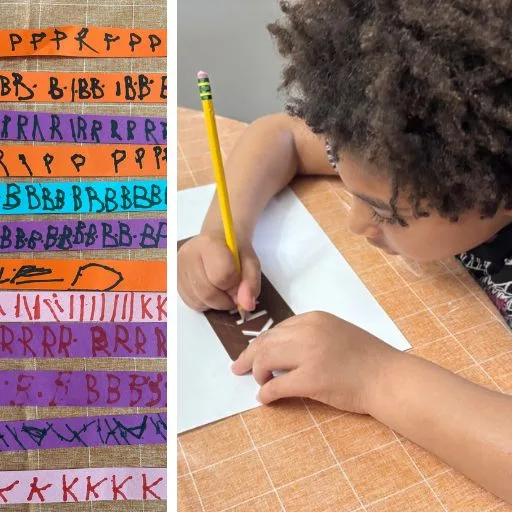
Kristi, mom to Justice (21, living with PWS):
Over the years Justice has had many therapists, one OT we will never forget.
Justice was always able to learn new things, but some things were just a lot harder for her. One of those things was tying her shoes. I had almost completely given up, but her OT never did. For Justice finding the right way for her to understand something is key. Her OT researched and found many different ways to teach Justice. She was patient, caring and very determined to get this skill mastered. One day at OT she came in with yet another method for tying shoes, and it was exactly what Justice needed to master this skill. Finding a compassionate, caring team of therapists who will not give up on your child is truly everything

Elaine, mom to James (39, living with PWS):
My son is now 39 years-old and I still have vivid memories of his OT journey. We were referred for therapies when he was 6-months old and the assessment determined that OT would be the place to start. Initial goals of treatment were overall stimulation to keep him awake and alert for longer periods of time, especially during feeding; strengthening muscles; improving core stability; and sensory integration. As he got older, we focused on fine motor skills and later gross motor skills. One of the first big tasks was getting him to hold his head up during tummy time.
We rolled a large towel and propped him up under his arms – he hated it! But it worked and he made good progress. A fun memory is having a tire swing in our living room. We needed to stimulate him with motion and my husband made a tire swing just like the one they used at Easter Seals. It hung in our living room for probably a year. We used it daily for our son and his 3 year-old big sister loved it too! He used a big variety of wheeled toys during therapy which promoted balance and muscle tone. We went to Easter Seals for 6 years and worked with the same Occupational Therapist for that entire time. She changed our lives and his in a way we would not have been able to on our own. He continued OT at school for another couple of years but his Easter Seals years were defining for our family.
Occupational therapy is now considered standard of care and I hope all families are able to take advantage of the benefits of this therapy.
Anne, mom to Freya (13, living with PWS):
Freya had a few wonderful therapists in her life that understood body movements as a wholistic approach. Her oral and motor therapist first focused on her core strength because, as she explained, if her core was weak then her shoulders could not align properly, and then her neck would not rest on her shoulders properly, on up to the muscles of her jaw not being able to work effectively for safe eating and articulate speech. This was a very different, and far more effective approach, than her PT who tried to get her up and walking before she was really even crawling.
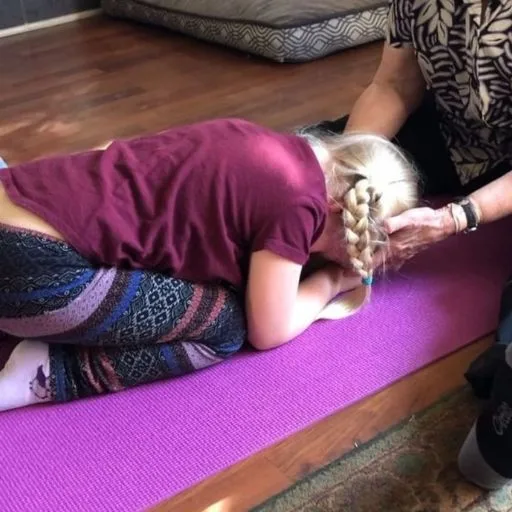
As Freya got a little older, she began seeing an OT who focused on reflex integration. I believe this perspective was life changing for Freya (and for my perspective on helping her be in the world). The main idea was that because of her challenges with hypotonia, she had not progressed out of nor developed needed reflexes that typically developing children do. This not only affected her body’s ability to move in her space, but also her more innate and emotional understanding and presence in the world. The therapies we did are called “rhythmic movements” and looked like me rocking Freya’s body in different positions as I sang to her. Perhaps that sounds a bit woo to some people, but I saw effects within a week; how she walked up the stairs, moved her body more confidently, learned to tie her shoes, and eventually, improved handwriting. If nothing else, doing these therapies 3 or 4 times a week before bed were sweet moments of connection and calm.
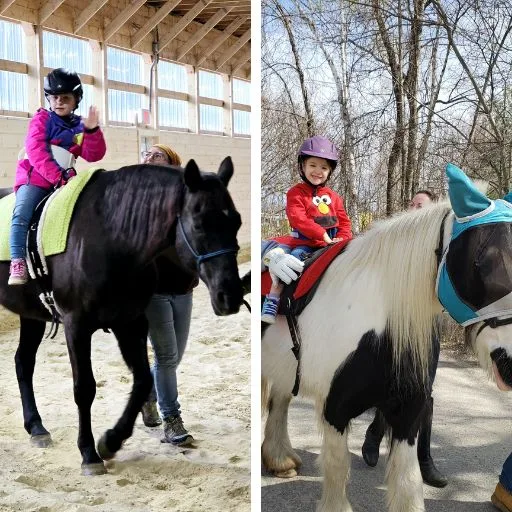
Melanie, mom to Josephine (6, living with PWS):
In the Birth to Three Facebook group, I learned about a new therapy called Hippotherapy and wanted it for Josephine too! Knowing she loved animals, needed to build core strength, hearing how it might help her speech to blossom, all of these things convinced me quickly to explore it as an option. I read up on the difference between “therapeutic riding” and “hippotherapy” (OT/PT on horseback with a licensed therapist/covered by insurance), and our journey began.
Hippotherapy means “treatment with the help of a horse.” It’s a type of physical, occupational, or
speech therapy that uses the unique movements of a horse to help individuals with various physical, mental, and behavioral challenges. Essentially, the horse’s movement provides a form of therapy, helping to improve motor skills, sensory processing, and other areas. In hippotherapy, a licensed therapist (most typically OT or PT) leads sessions and uses the horse’s movements to achieve specific therapeutic goals. The movement from the horse also provides specific sensory and motor input for the rider/child. It can help with SO MANY things: improving balance, strength, and coordination, enhance sensory processing, promote improvement in functional skills (sitting, standing, walking, etc.), and even facilitate speech and language development.
Learn More
Learn more about Occupational Therapy by reading our recent blog post and interview with a practicing occupational therapist, Kristi Larsen: Celebrating Occupational Therapy Month: How OT Builds Confidence, Comfort, and Skills for Life – Prader-Willi Syndrome Association | USA
Share this!
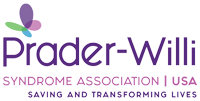

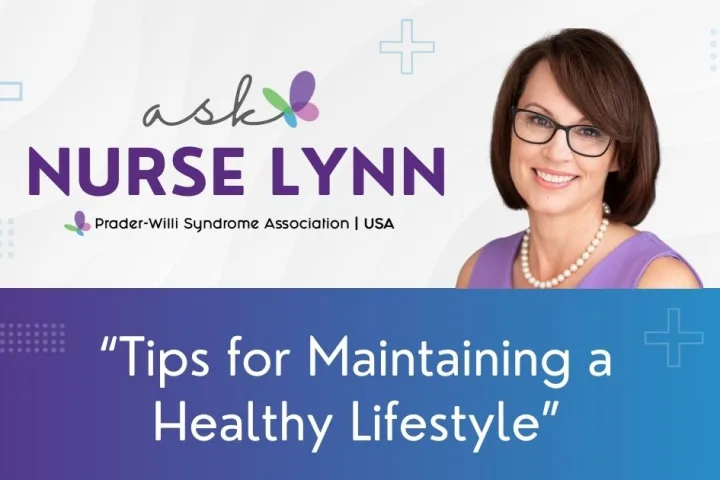
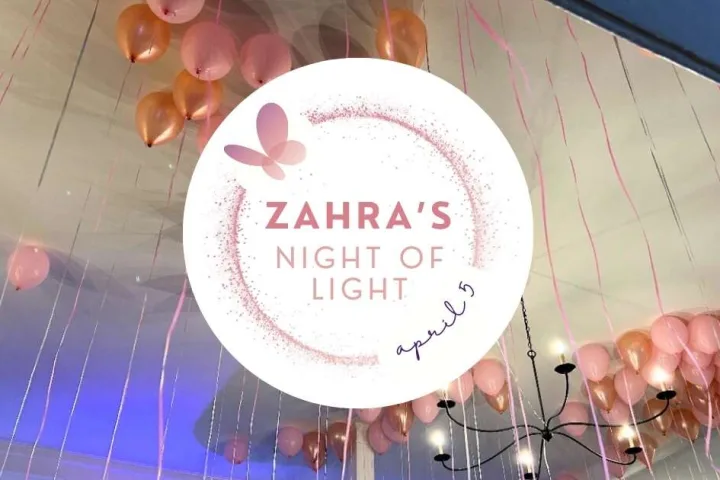

 Jennifer Bolander has been serving as a Special Education Specialist for PWSA (USA) since October of 2015. She is a graduate of John Carroll University and lives in Ohio with her husband Brad and daughters Kate (17), and Sophia (13) who was born with PWS.
Jennifer Bolander has been serving as a Special Education Specialist for PWSA (USA) since October of 2015. She is a graduate of John Carroll University and lives in Ohio with her husband Brad and daughters Kate (17), and Sophia (13) who was born with PWS. Perry A. Zirkel has written more than 1,500 publications on various aspects of school law, with an emphasis on legal issues in special education. He writes a regular column for NAESP’s Principal magazine and NASP’s Communiqué newsletter, and he did so previously for Phi Delta Kappan and Teaching Exceptional Children.
Perry A. Zirkel has written more than 1,500 publications on various aspects of school law, with an emphasis on legal issues in special education. He writes a regular column for NAESP’s Principal magazine and NASP’s Communiqué newsletter, and he did so previously for Phi Delta Kappan and Teaching Exceptional Children.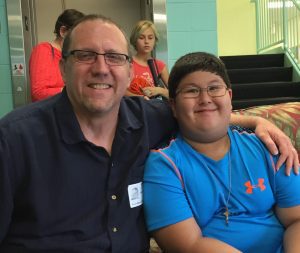 Evan has worked with the Prader-Willi Syndrome Association (USA) since 2007 primarily as a Crisis Intervention and Family Support Counselor. Evans works with parents and schools to foster strong collaborative relationships and appropriate educational environments for students with PWS.
Evan has worked with the Prader-Willi Syndrome Association (USA) since 2007 primarily as a Crisis Intervention and Family Support Counselor. Evans works with parents and schools to foster strong collaborative relationships and appropriate educational environments for students with PWS.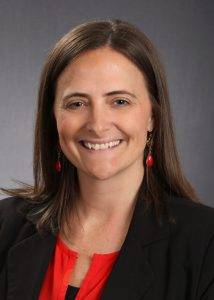 Dr. Amy McTighe is the PWS Program Manager and Inpatient Teacher at the Center for Prader-Willi Syndrome at the Children’s Institute of Pittsburgh. She graduated from Duquesne University receiving her Bachelor’s and Master’s degree in Education with a focus on elementary education, special education, and language arts.
Dr. Amy McTighe is the PWS Program Manager and Inpatient Teacher at the Center for Prader-Willi Syndrome at the Children’s Institute of Pittsburgh. She graduated from Duquesne University receiving her Bachelor’s and Master’s degree in Education with a focus on elementary education, special education, and language arts.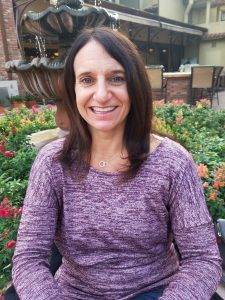 Staci Zimmerman works for Prader-Willi Syndrome Association of Colorado as an Individualized Education Program (IEP) consultant. Staci collaborates with the PWS multi-disciplinary clinic at the Children’s Hospital in Denver supporting families and school districts around the United States with their child’s Individual Educational Plan.
Staci Zimmerman works for Prader-Willi Syndrome Association of Colorado as an Individualized Education Program (IEP) consultant. Staci collaborates with the PWS multi-disciplinary clinic at the Children’s Hospital in Denver supporting families and school districts around the United States with their child’s Individual Educational Plan.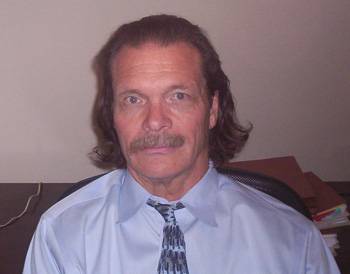 Founded in 2001, SDLC is a non-profit legal services organization dedicated to protecting and advancing the legal rights of people with disabilities throughout the South. It partners with the Southern Poverty Law Center, Protection and Advocacy (P&A) programs, Legal Services Corporations (LSC) and disability organizations on major, systemic disability rights issues involving the Individuals with Disabilities Education Act (IDEA), Americans with Disabilities Act (ADA), and the federal Medicaid Act. Recently in November 2014, Jim retired.
Founded in 2001, SDLC is a non-profit legal services organization dedicated to protecting and advancing the legal rights of people with disabilities throughout the South. It partners with the Southern Poverty Law Center, Protection and Advocacy (P&A) programs, Legal Services Corporations (LSC) and disability organizations on major, systemic disability rights issues involving the Individuals with Disabilities Education Act (IDEA), Americans with Disabilities Act (ADA), and the federal Medicaid Act. Recently in November 2014, Jim retired.